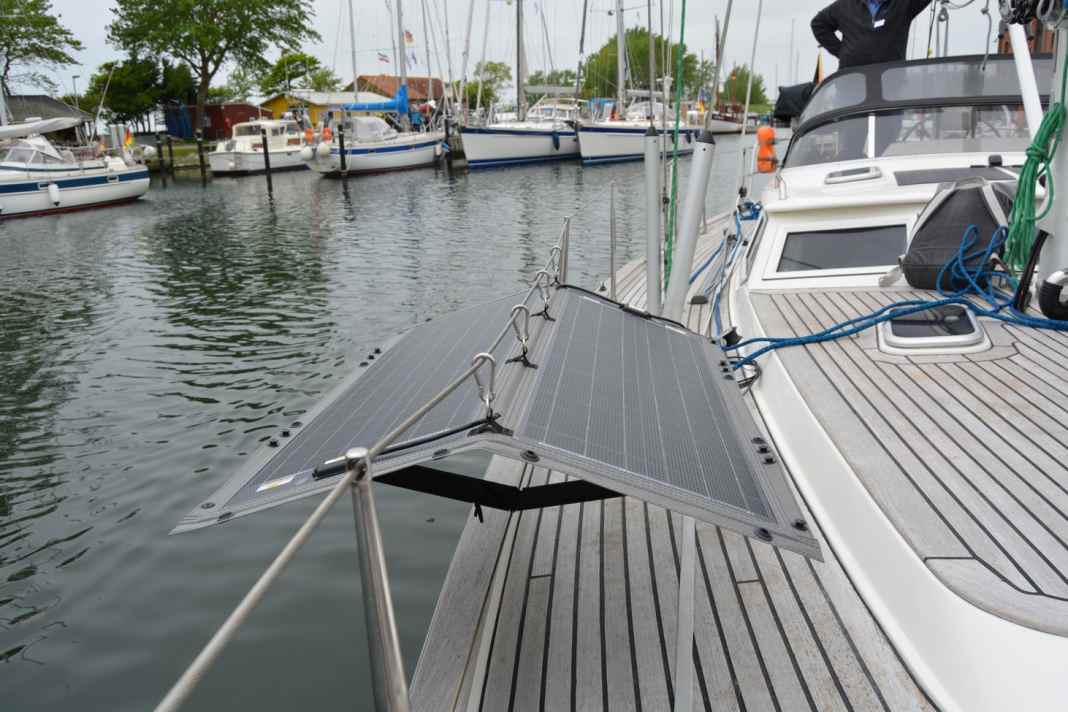





The modules in the RX-Rail series are attached to a strong fabric with eyelets for easy fastening. This allows the solar panels to be simply hooked into the top wire of the railing. Two flat supports under the modules are attached to the centre railing wire with a rubber band, so the solar cells are aligned almost horizontally. When the rubber band is released, they hang down on both sides of the sea fence. Both sides are fixed together with a Loxx fastener (formerly Tenax), which secures the panels to the railing when under sail.
Mounting options for the solar panels
Because the RX-Rail modules are secured to the railing wire with hooks and not simply laid over it, there is still enough space on the wire to attach fenders, for example. This means that the solar panels do not interfere with harbour manoeuvres.
However, other mounting options are also welcome. In addition to the railing, the panels can also be mounted above the main boom or on the deck, superstructure roof or bimini. The better they are orientated towards the sun, the better.
These systems are available
The RX modules are available for 12-volt systems with 60, 90 and 120 watt peak power. The most powerful version measures 1106 x 826 millimetres and weighs 5.1 kilograms. Two models with 90 and 120 watt peak are available for 24-volt systems. All variants have a five metre long connection cable that is particularly flexible. A mini charge regulator with a 12-volt plug from the automotive sector is integrated into the cable. This means that the module can simply be plugged into the socket and immediately charge the battery. No tools required. If a solar charge controller is already on board, the controller integrated in the cable can also be unplugged and the solar panel connected to the on-board power supply in this way.
The 60-watt module costs 729 euros, the 90-watt module 1122 euros and the 120-watt module 1339 euros for 12-volt systems. For 24-volt systems, the 90-watt module costs 1155 euros and the 120-watt module 1379 euros.
